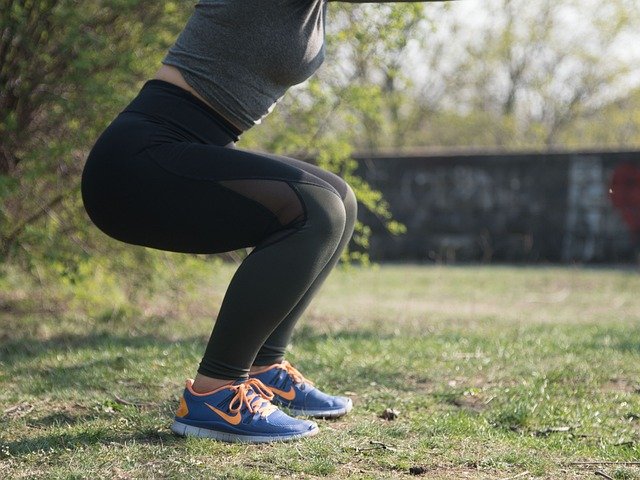Circadian Fitness: Syncing Exercise with Your Body Clock
Imagine a world where your workout routine is perfectly attuned to your body's natural rhythms, maximizing results and minimizing fatigue. What if the timing of your exercise could be as crucial as the exercise itself? Welcome to the fascinating realm of circadian fitness, where science meets sweat in a revolutionary approach to physical well-being.

The Science Behind Circadian Rhythms
Circadian rhythms are the body’s natural 24-hour cycles that regulate various physiological processes, including hormone production, body temperature, and metabolism. These rhythms are primarily controlled by the suprachiasmatic nucleus (SCN) in the brain, often referred to as our master clock. The SCN responds to external cues, particularly light, to synchronize our internal processes with the environment.
Research has shown that many aspects of our physiology fluctuate throughout the day in response to these circadian rhythms. For instance, body temperature tends to be lowest in the early morning and highest in the late afternoon. Similarly, hormone levels, such as cortisol and testosterone, follow distinct daily patterns that can influence our energy levels, mood, and physical performance.
Chronotypes and Exercise Preferences
Not everyone’s circadian rhythms are identical. Chronotypes, or individual differences in circadian rhythms, can influence when a person feels most alert and energetic. Traditionally, people have been categorized as “morning larks” or “night owls,” but recent research suggests that chronotypes exist on a spectrum.
Understanding your chronotype can help you determine the optimal time for exercise. Morning larks may find they perform best with early workouts, while night owls might excel in evening training sessions. However, it’s essential to note that chronotypes can be influenced by factors such as age, lifestyle, and even genetics.
Timing Your Workouts for Maximum Effect
Emerging research suggests that certain types of exercise may be more effective at specific times of day. For instance, a study published in the Journal of Physiology found that afternoon strength training led to greater muscle hypertrophy compared to morning sessions. This could be attributed to the natural peak in body temperature and hormone levels that occurs later in the day.
Conversely, some evidence indicates that morning cardio sessions may be more effective for fat burning. A study in the British Journal of Nutrition reported that exercising before breakfast resulted in increased fat oxidation throughout the day. This effect may be due to lower insulin levels in the morning, which can promote the use of fat as an energy source.
Circadian Fitness and Recovery
The concept of circadian fitness extends beyond just workout timing; it also encompasses recovery and sleep patterns. Quality sleep is crucial for muscle repair, hormone regulation, and overall health. By aligning your sleep schedule with your natural circadian rhythms, you can enhance recovery and potentially improve athletic performance.
Research has shown that disruptions to circadian rhythms, such as those experienced by shift workers or individuals with jet lag, can negatively impact physical performance and increase the risk of injuries. Therefore, maintaining a consistent sleep schedule and exposure to natural light cycles can be just as important as the timing of your workouts.
Practical Implementation of Circadian Fitness
Incorporating circadian fitness principles into your routine doesn’t necessarily mean overhauling your entire schedule. Small adjustments can yield significant benefits. Here are some practical tips to get started:
-
Identify your chronotype through observation or online assessments
-
Experiment with different workout times to find your optimal performance window
-
Aim for consistency in your sleep and exercise schedules
-
Expose yourself to natural light early in the day to reinforce your circadian rhythms
-
Consider the timing of your meals in relation to your workouts and sleep schedule
Chronobiological Wellness Insights
-
Morning light exposure can help reset your circadian clock and improve sleep quality
-
The body’s core temperature peaks in the late afternoon, which may enhance exercise performance
-
Protein synthesis, crucial for muscle growth, may be most efficient in the evening hours
-
Cortisol levels are naturally highest in the morning, which can impact exercise intensity and recovery
-
Night-time blue light exposure from electronic devices can disrupt circadian rhythms and sleep quality
As we continue to unravel the intricate relationship between our body clocks and physical performance, circadian fitness emerges as a promising frontier in health and wellness. By aligning our exercise routines with our natural biological rhythms, we can potentially enhance the benefits of physical activity while minimizing the risk of burnout and injury. Remember, the key to success lies not just in what we do, but when we do it. Embrace the rhythm of your body, and let circadian fitness guide you towards a more harmonious and effective approach to health and wellness.





